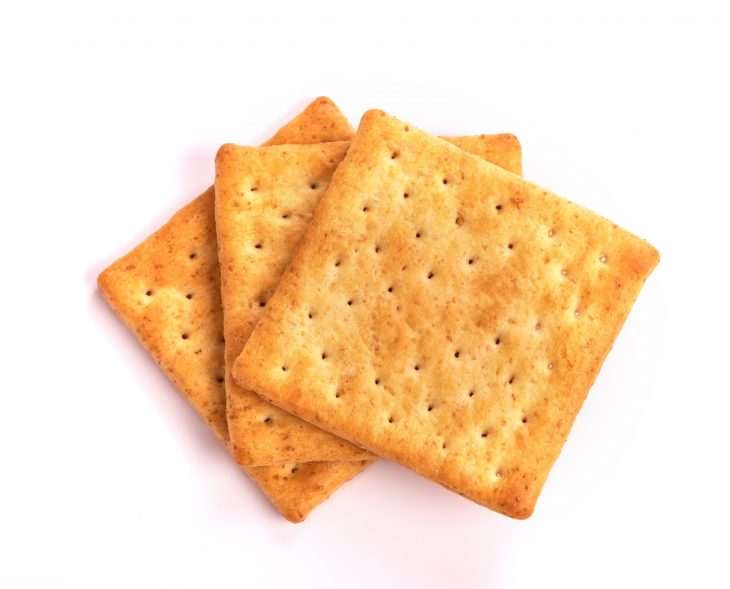
Club Crackers are a popular snack choice for many people. These crunchy, buttery crackers are not only delicious but also provide some nutritional benefits. In this article, we will explore the nutrition facts of Club Crackers, highlighting their key ingredients, calorie content, and other important nutritional information. Whether you enjoy them on their own or use them as a base for various toppings and spreads, Club Crackers can be a satisfying and wholesome snack option.
Understanding Club Crackers
Club Crackers are a type of crisp, rectangular-shaped cracker that is often enjoyed as a snack or used in recipes. They have a distinctive buttery flavor and a light, flaky texture that makes them enjoyable to eat on their own or as part of a snack or meal.
Serving Size
The serving size for Club Crackers is typically around 5 crackers (about 15 grams).
Calories
A serving of Club Crackers contains approximately 70-80 calories, depending on the specific brand and variety.
Total Fat
The fat content in Club Crackers is generally low, ranging from 2-4 grams per serving.
Carbohydrates
A serving of Club Crackers provides around 9-11 grams of carbohydrates, with a small amount of dietary fiber.
Protein
Club Crackers contain a small amount of protein, usually around 1-2 grams per serving.
Source of Energy
Club Crackers are a source of carbohydrates, which are the body’s primary source of energy.
Dietary Fiber
While Club Crackers are not particularly high in fiber, they do provide a small amount, which can contribute to digestive health.
Versatile Snack
Club Crackers can be enjoyed on their own as a snack or paired with various toppings and spreads, allowing for a range of flavor combinations and culinary creativity.
Portion Control
As with any snack, it’s important to consume Club Crackers in moderation. Pay attention to the recommended serving size and be mindful of your overall calorie intake.
Pair with Nutritious Toppings
Enhance the nutritional value of Club Crackers by pairing them with nutritious toppings such as hummus, nut butter, or slices of fresh vegetables.
Balanced Diet
Remember that Club Crackers should be part of a well-balanced diet that includes a variety of whole foods, such as fruits, vegetables, lean proteins, and whole grains.
Conclusion
Club Crackers are a tasty and convenient snack option that can be enjoyed in various ways. While they are not a significant source of nutrients, they can still fit into a balanced diet when consumed in moderation. With their light and buttery flavor, Club Crackers can be a satisfying treat on their own or paired with nutritious toppings. Remember to make mindful choices and incorporate a variety of nutrient-rich foods into your diet for overall health and well-being.
Frequently Asked Questions (FAQs)
Are Club Crackers gluten-free?
No, Club Crackers are typically made with wheat flour and, therefore, contain gluten. If you have a gluten intolerance or celiac disease, it’s best to look for gluten-free cracker alternatives.
Can Club Crackers be part of a weight loss diet?
While Club Crackers can be included in a weight loss diet, it’s important to be mindful of portion sizes and consider their calorie content. They can be enjoyed as a snack in moderation, alongside other nutrient-dense foods.
Can Club Crackers be used in recipes?
Yes, Club Crackers can be used as a base for various recipes, such as cheesecake crusts, meatball coatings, or as a crunchy topping for casseroles. They add texture and flavor to dishes.
Are there any allergens in Club Crackers?
Club Crackers typically contain wheat and may also contain soy, which are common allergens. It’s important to read the ingredient labels carefully if you have specific dietary restrictions or allergies.
Can Club Crackers be part of a healthy snack option for kids?
Club Crackers can be included as part of a balanced snack for kids. However, it’s important to consider their overall nutritional needs and offer a variety of other nutrient-dense snacks, such as fresh fruits and vegetables.
Was this page helpful?
Our commitment to delivering trustworthy and engaging content is at the heart of what we do. Each fact on our site is contributed by real users like you, bringing a wealth of diverse insights and information. To ensure the highest standards of accuracy and reliability, our dedicated editors meticulously review each submission. This process guarantees that the facts we share are not only fascinating but also credible. Trust in our commitment to quality and authenticity as you explore and learn with us.


